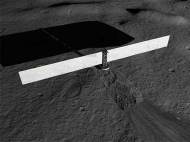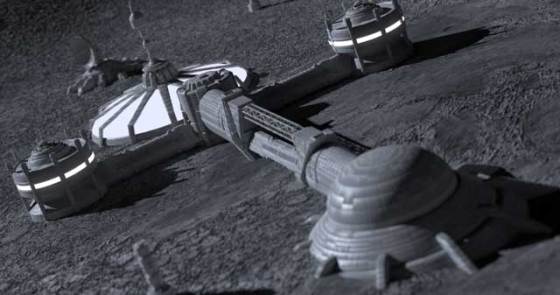Novel nuclear power plants developed for future extraterrestrial bases
 Researchers from the National Aeronautics and Space Administration (NASA) and the U.S. Department of Energy (DOE) are cooperating in order to develop a technology that could be used as the first nuclear power plant for production of electricity on potential future extraterrestrial bases. Although far different from the familiar terrestrial nuclear power stations, they are hoping to demonstrate the technology next year.
Researchers from the National Aeronautics and Space Administration (NASA) and the U.S. Department of Energy (DOE) are cooperating in order to develop a technology that could be used as the first nuclear power plant for production of electricity on potential future extraterrestrial bases. Although far different from the familiar terrestrial nuclear power stations, they are hoping to demonstrate the technology next year.
“People would never recognize the fission power system as a nuclear power reactor”, said James E. Werner, who leads the DOE’s Idaho National Laboratory involvement in this project. “The reactor itself may be about 1.5 feet [45.7 cm] wide by 2.5 feet [76.2 cm] high, about the size of a carry-on suitcase. There are no cooling towers. A fission power system is a compact, reliable, safe system that may be critical to the establishment of outposts or habitats on other planets. Fission power technology can be applied on Earth’s Moon, on Mars, or wherever NASA sees the need for continuous power.”
While solar cells do a great job supplying electricity in near-Earth orbits and for satellite-borne equipment, they do have limitations. For example, the Moon’s solar illumination varies much less with season, and topographical details play a crucial role in seasonal effects. There are places that remain in permanent shadow at the bottoms of many polar craters and the switch between the night and day is different compared to one on Earth.
“The biggest difference between solar and nuclear reactors is that nuclear reactors can produce power in any environment”, Werner added in his speech at the 242nd National Meeting & Exposition of the American Chemical Society. “Fission power technology doesn’t rely on sunlight, making it able to produce large, steady amounts of power at night or in harsh environments like those found on the Moon or Mars. A fission power system on the Moon could generate 40 kilowatts or more of electric power, approximately the same amount of energy needed to power eight houses on Earth.”
In addition, he said that a fission power system could operate in a variety of locations such as in craters, canyons or caves. Werner’s team participates in the reactor design and modeling teams, fuel development and fabrication and development of a small electrical pump for the liquid metal cooled system.
Fission power systems rely on energy generated from nuclear fission. Nuclear fission works by splitting uranium atoms to generate heat that is then converted into electric power. The primary components of a fission power system are similar to those found in the commercial reactors currently in use, but the fission power systems for space applications feature a number of differences compared with commercial reactors.
“While the physics are the same, the low power levels, control of the reactor and the material used for neutron reflection back into the core are completely different”, said Werner. “Weight is also a significant factor that must be minimized in a space reactor that is not considered in a commercial reactor.”
The researchers hope that once the technology is developed and validated, it may prove to be one of the most affordable and versatile options for providing long-term base power for the space exploration programs.










So why don’t they use it to power vehicles or suburban neighborhoods here on Earth?
author
You misunderstood a part of the article. The reactor is small in size, while the rest of the power plant requires more space. For example, the pipes used for cooling of the reactor would require much more space.
It could be used in suburban neighborhoods, but there are many issues needed to be solved (such as security, maintenance, the price…).